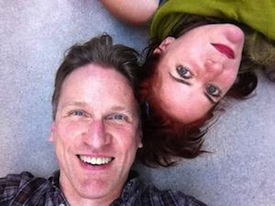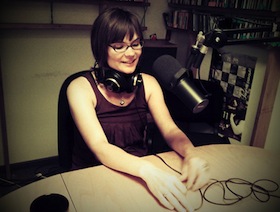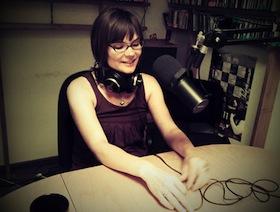
I’m happy that I can talk a bit about the San Francisco Electronic Music Festival, which I attended recently. Often, when I review concerts, I’m more or less confident in my opinion. I’m a musician, I’ve been trained, I understand classical music (with an emphasis in modern music), and I believe that what I say in a given review may be worthwhile. This is not quite so true here. To be truthful, I don’t know a lot about electronic music or taken a course in it. True, I’ve dabbled in it, as virtually all composers these days have done, but I feel the same way about electronic music that I do about cheese: I love them both. But my lack of knowledge of how cheese, or electronic music, is made doesn’t hinder my ability to appreciate and love it.
Lucky for me, the San Francisco Electronic Music Festival is full of people who have not moved my cheese and who have dedicated their lives to electronic material, both on stage and in the audience. While I hazard a guess that their opinions might be more “official” and “proper” than mine, I can only react to what I myself heard and liked. Herewith are some highlights.
Les Stuck and Sonsherée Giles collaborated to create a work of art called Plane, which began with a projection of a dancer, gyrating wildly, low to the ground. Special effects made the dancer seem to be a two-dimensional object (as was the screen on which she was projected); the image was inverted, making the dancer’s “floor” the ceiling. This shadow dancer moved chaotically across the ceiling, swirling into loops sometimes, with special effects used to adjust color and shape and to blur the image. The music bubbled along enthusiastically with beeps and bloops that, while rhythmically necessary, texturally did not encompass enough variety for me. At first I thought this work was merely “cool,” but then came a complete blackout, and Giles entered the stage to dance on the floor against a flat projection of herself dancing on the “floor.” This dichotomy between the very 3-D dancer and her 2-D-flat twin made for an incredibly interesting effect, and I was drawn into it wholeheartedly.
Another intriguing performance was Dina Emerson’s rendition of the venerable composer Milton Babbit’s Philomel, one of the more challenging pieces written for live and prerecorded voices. The work is fiendishly difficult, and though Emerson didn’t make it sound easy, she did make it passionate and severe, beautiful and terrifying. Notes bounced between the various prerecorded voices and the live singer with precision and articulation. I hope other singers will take on this piece.
The Taste of Sound

Another composer, JD Emmanuel, did a half-hour set that dealt with the clear taste and texture of sound. Every figure would come back, but with a different understanding of “articulation” and “timbre,” thereby completely changing the meaning of the sounds. While I wish that the backdrop had been more interesting than the iTunes Visualizer that it approximated, the contrast in sounds that he produced was amazing.
The piece that most blew my mind in this festival was by Marielle V. Jakobsons (aka darwinsbitch), in a tribute to Max Matthews. For those not in the know, Matthews could be considered the most important figure in computer music. He created the first “sound libraries” and worked with punch cards; programmed accompaniment for an entirely computer-produced rendition of “Daisy Bell” that inspired the famous scene in Kubrick’s classic movie 2001: A Space Odyssey; Max/MSP is named for him; and he served on the Stanford faculty from 1987 on. Matthews died in April.
Jakobsons’ piece in his memory was inspired by her having played through Beethoven string quartets with his family. She took excerpts from the fourth string quartet and combined them with a program that she and Matthews worked on during the last years of his life, called Phase Filters. While I’m not comfortable telling you what Phase Filters does, I can tell you the effect. The Beethoven moved and modulated, sometimes clearly sounding like Beethoven, but sometimes seeming incredibly hidden, struggling to come through with such passion. Jakobsons and Diane Douglas opened up a wide range of sounds, but the basic effect was warm and enveloping, enlarging the sound world of this new space.
Whatever audiences’ tastes — whether for classical, world music, electronic music, new music, Baroque, experimental, or many other forms — concerts around the Bay Area often achieve an incredibly high quality. We should go to more of them, to experience things outside our comfort zone.

